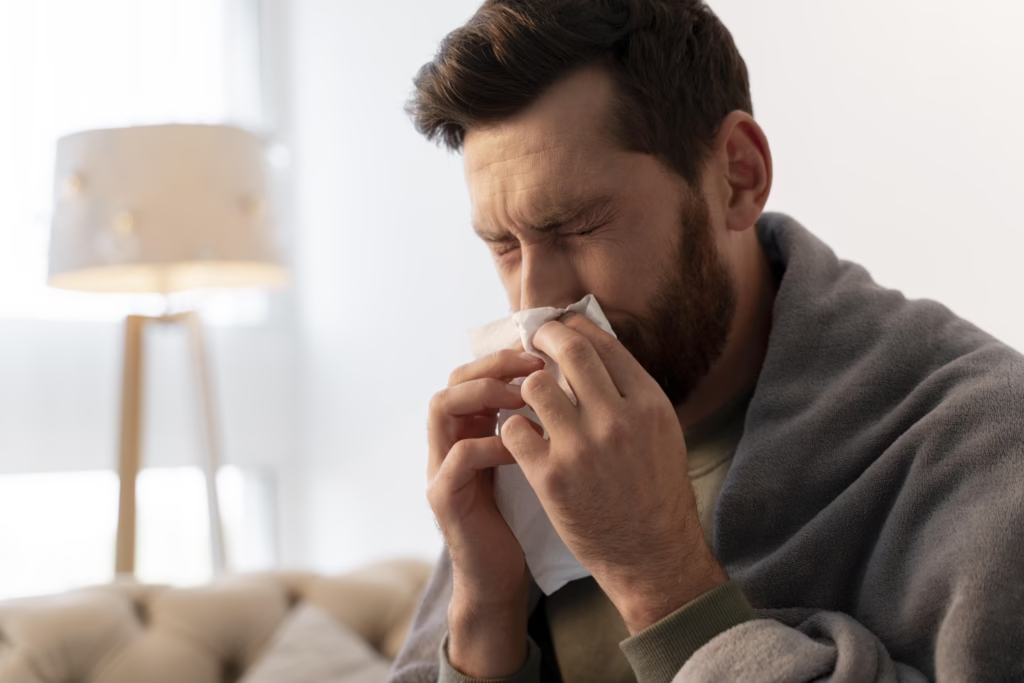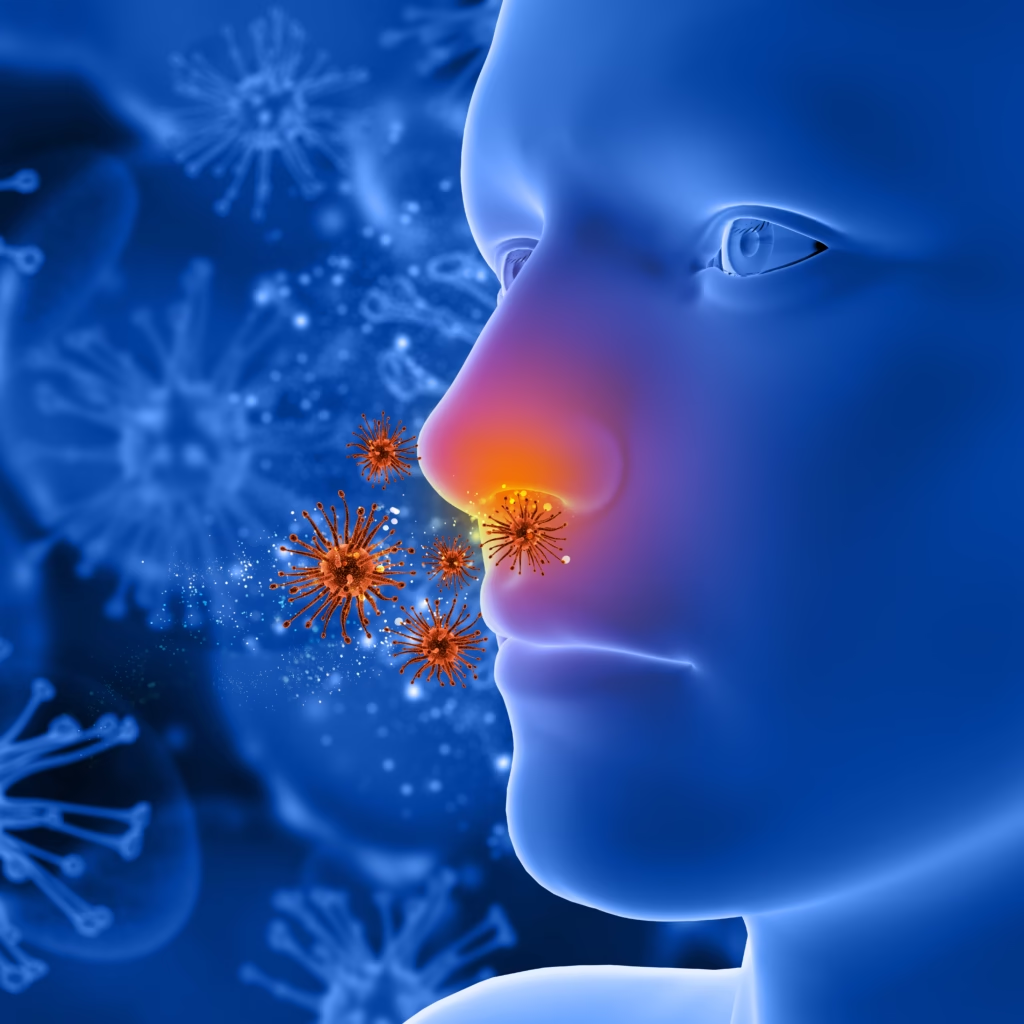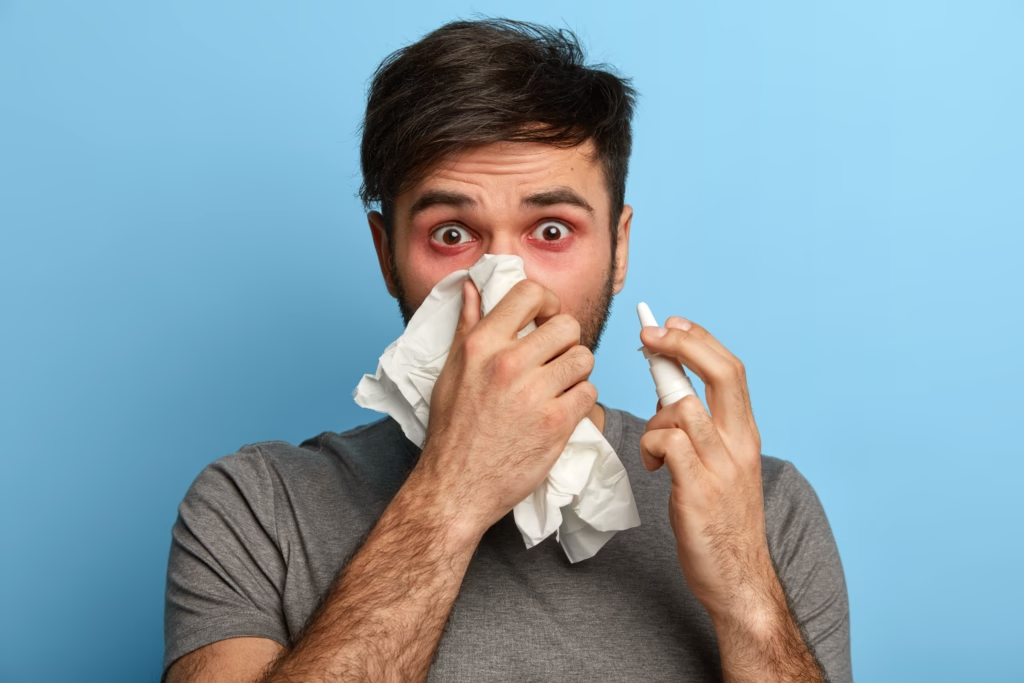The common cold is something nearly everyone has experienced — from the sneezing and runny nose to the sore throat and nagging cough. But have you ever wondered what exactly causes the common cold, how it spreads, or the best way to get rid of it fast? This comprehensive, is your go-to resource for understanding everything about the common cold — from symptoms and causes to natural remedies and prevention tips.

Table of Contents
What is the Common Cold?
The common cold is a viral infection that mainly targets the upper part of your respiratory system, especially your nose and throat. It’s one of those familiar illnesses we all face, often bringing along sniffles, a scratchy throat, and a general feeling of being run down. Although it is usually harmless, it can be incredibly annoying and disruptive to daily life. In contrast to the flu, which usually appears abruptly with intense symptoms, a cold develops more slowly and tends to be milder.

Fast Facts:
The common cold can be triggered by more than 200 different viruses, with rhinovirus being the most frequently responsible.
On average, adults experience 2 to 4 colds annually, while children tend to catch colds even more often.
How Does the Common Cold Spread?
The common cold is highly contagious, especially in the early stages when symptoms are just beginning. It spreads through:
- Airborne droplets from coughs and sneezes
- Touching contaminated surfaces (doorknobs, phones, handrails)
- Close personal contact (like handshakes or sharing utensils)
Viruses can live on surfaces for several hours, making it easy to contract the cold without even realizing it.

What Are the Symptoms of a Common Cold?
The symptoms of the common cold usually appear 1 to 3 days after exposure to a cold-causing virus and can vary from person to person. Common symptoms include:
- Runny or stuffy nose
- Sore throat
- Cough
- Sneezing
- Mild headache
- Low-grade fever (usually under 101°F or 38.3°C)
- Mild body aches or fatigue
Children may also develop a fever with a cold, which is less common in adults.
How Long Does a Cold Last?
Most colds resolve within 7–10 days, though a lingering cough or stuffy nose may persist for up to two weeks. The first 2–3 days are typically the most contagious, so it’s best to rest and avoid spreading the virus to others during this time
What Causes the Common Cold?
While rhinoviruses are responsible for over 50% of all colds, other viruses like coronaviruses, adenoviruses, and respiratory syncytial virus (RSV) can also be to blame.
Cold weather doesn’t directly cause a cold, but being indoors in close quarters during colder months increases the chance of exposure.
Risk Factors for Getting a Cold
Several factors can raise your likelihood of developing a cold:
- Weakened immune system
- Lack of sleep
- Poor hand hygiene
- Exposure to infected individuals
- Age (young children and elderly are more vulnerable)
- Season (more common in fall and winter)
Diagnosing the Common Cold
There is no specific test for the common cold. Diagnosis is usually based on your symptoms and medical history. Your doctor may rule out other conditions like the flu, allergies, or COVID-19, especially if symptoms are severe or long-lasting.

Treatment Options for the Common Cold
Although the common cold cannot be cured, treatment focuses on managing and relieving the symptoms
- Decongestants (e.g., pseudoephedrine) for stuffy nose
- Antihistamines for runny nose and sneezing
- Pain relievers (e.g., paracetamol or ibuprofen) for headaches and body aches
- Cough suppressants or expectorants
⚠️Important: Aspirin should never be given to children, as it may lead to a serious condition called Reye’s syndrome.

Home Remedies for the Common Cold
A lot of individuals use natural remedies to help relieve cold symptoms. While they may not shorten the duration of the cold, they can make you feel more comfortable.
Top Natural Remedies:
- Warm saltwater gargles for sore throat
- Steam inhalation to ease congestion
- Ginger tea with honey and lemon
- Turmeric milk for boosting immunity
- Hydration — drink plenty of water, soups, and warm fluids
- Rest — sleep helps the immune system recover
Foods That Help You Fight a Cold
Certain foods can help boost your immune system and relieve symptoms
- Citrus fruits (rich in Vitamin C)
- Garlic (antiviral and antibacterial)
- Ginger (anti-inflammatory)
- Chicken soup (reduces inflammation and congestion)
- Yogurt (contains probiotics)
Eating a balanced diet when you’re sick supports recovery and can reduce the duration of your cold.
Common Cold vs. Flu vs. COVID-19
The common cold is often mistaken for the flu or COVID-19 by many people. Here’s how to tell the difference:
Symptom Common Cold Flu COVID-19
- Fever Rare Common Common
- Cough Mild Severe Dry or wet
- Fatigue Mild Moderate to severe Often present
- Sore Throat Common Sometimes Sometimes
- Sneezing Common Rare Rare
- Loss of Taste/Smell Rare Rare Common
When in doubt, get tested — especially during flu season or COVID-19 outbreaks.
How to Prevent the Common Cold
Top Prevention Tips:
- Make sure to wash your hands often using soap and water, scrubbing for a minimum of 20 seconds.
- Avoid touching your face, especially nose, eyes, and mouth
- Disinfect frequently touched surfaces
- Stay away from sick individuals
- Strengthen your immune system with healthy food, regular exercise, and sufficient sleep
There’s no vaccine for the common cold, so prevention and hygiene are your best defense.
When to See a Doctor
Most colds are self-limiting, but seek medical attention if:
- Symptoms last more than 10 days
- You have high fever (>102°F or 39°C)
- Shortness of breath or chest pain
- Symptoms worsen instead of improving
- You have chronic health issues like asthma, diabetes, or heart disease
- Children and the elderly should be monitored closely, as complications can arise more easily in these groups.

Complications of the Common Cold
Although rare, complications from a cold can include:
- Sinus infection
- Middle ear infection (otitis media)
- Bronchitis
- Asthma exacerbation
If cold symptoms turn into severe cough, high fever, or facial pain, you may need antibiotics — but only if a bacterial infection is confirmed.
Myths About the Common Cold
Let’s bust some common myth
- “Going out in the cold weather causes colds” – False. Viruses cause colds, not the weather.
- “You need antibiotics for a cold” – False. Antibiotics don’t work against viruses.
- “Vitamin C can cure a cold” – Not quite. It might reduce the duration slightly but won’t cure it.
Conclusion: Stay One Step Ahead of the Common Cold
The common cold may be a universal experience, but understanding its causes, symptoms, and treatments can help you manage it more effectively. From boosting your immunity to practicing good hygiene, small steps can make a big difference in avoiding infections.
Remember, while a cold is usually harmless, it shouldn’t be ignored if symptoms persist or worsen. Take care of your body, listen to your symptoms, and when in doubt — consult your doctor.
Stay healthy. Stay informed.



